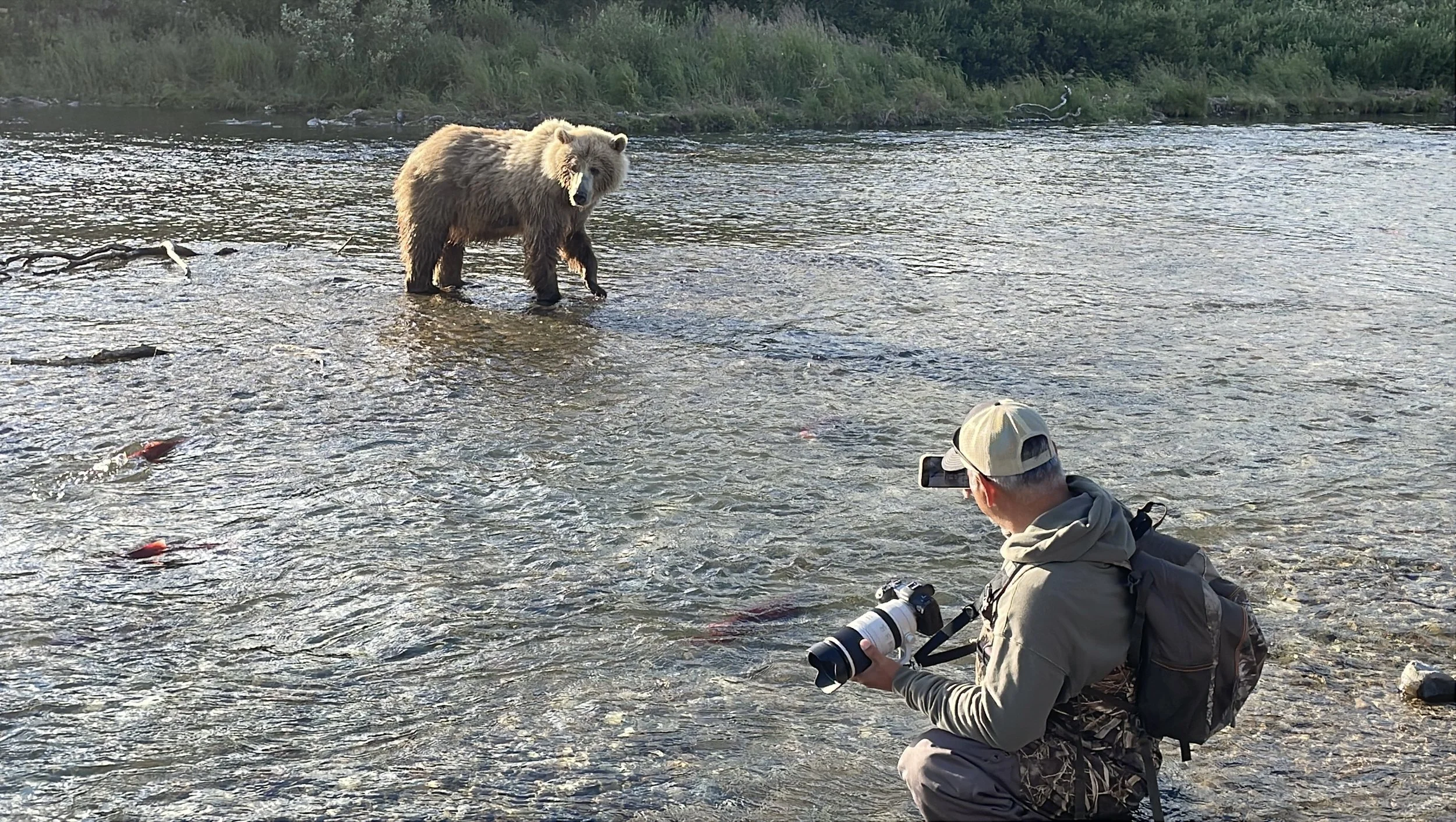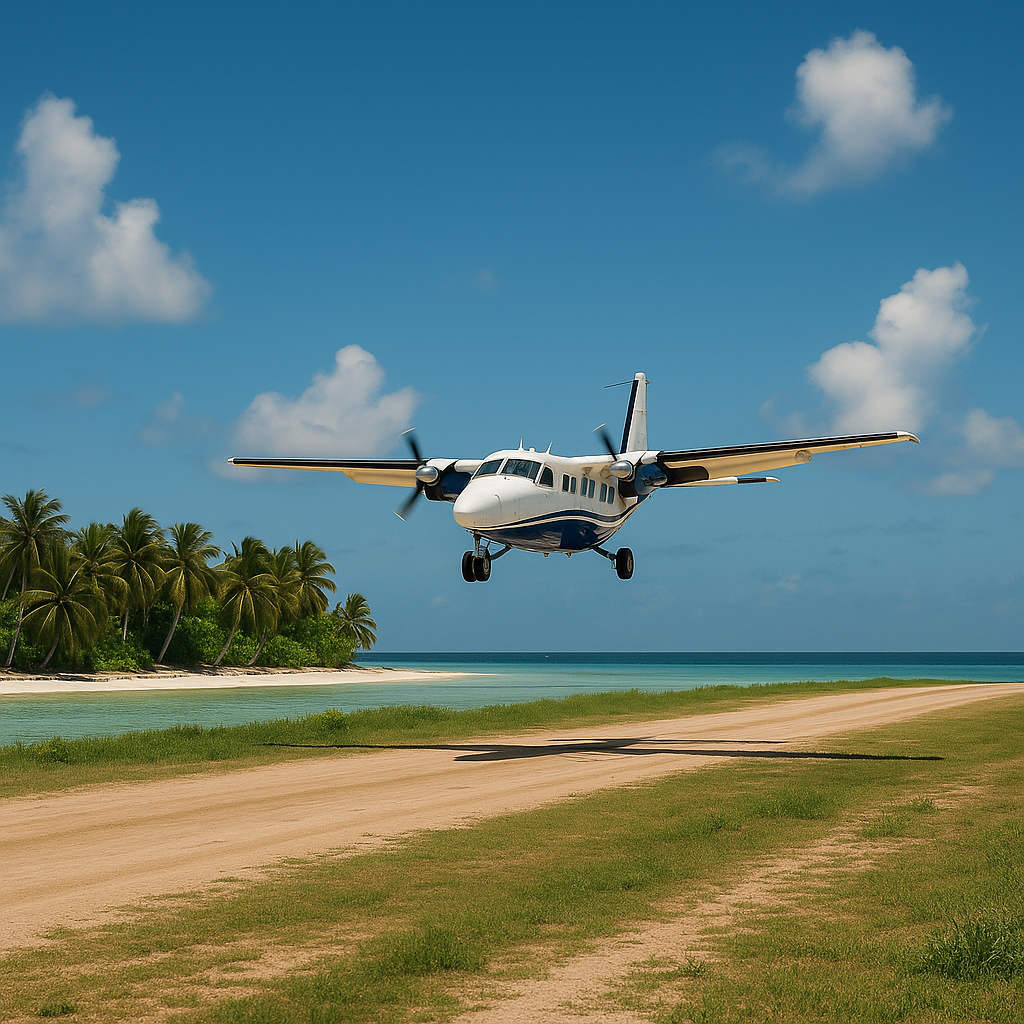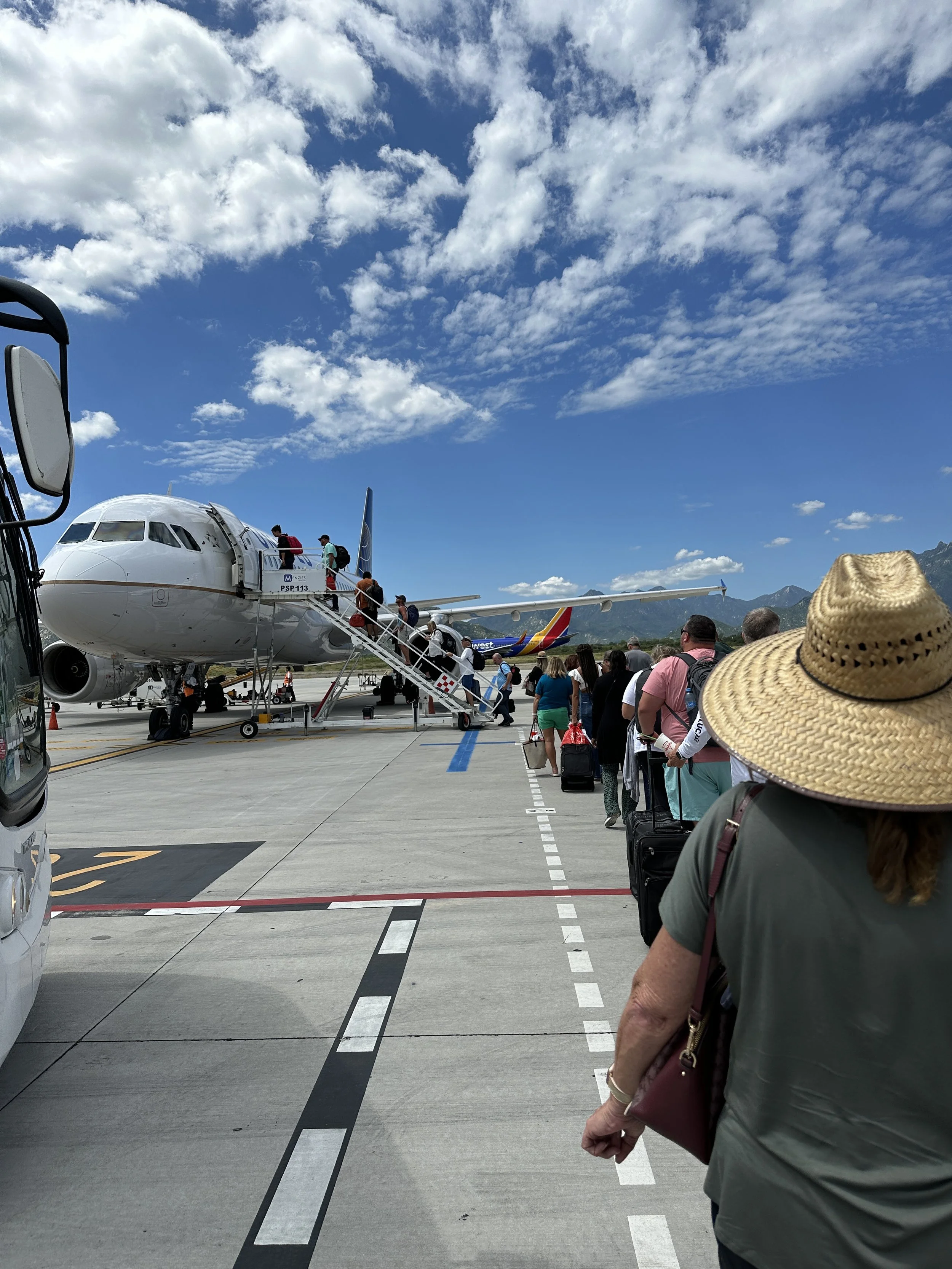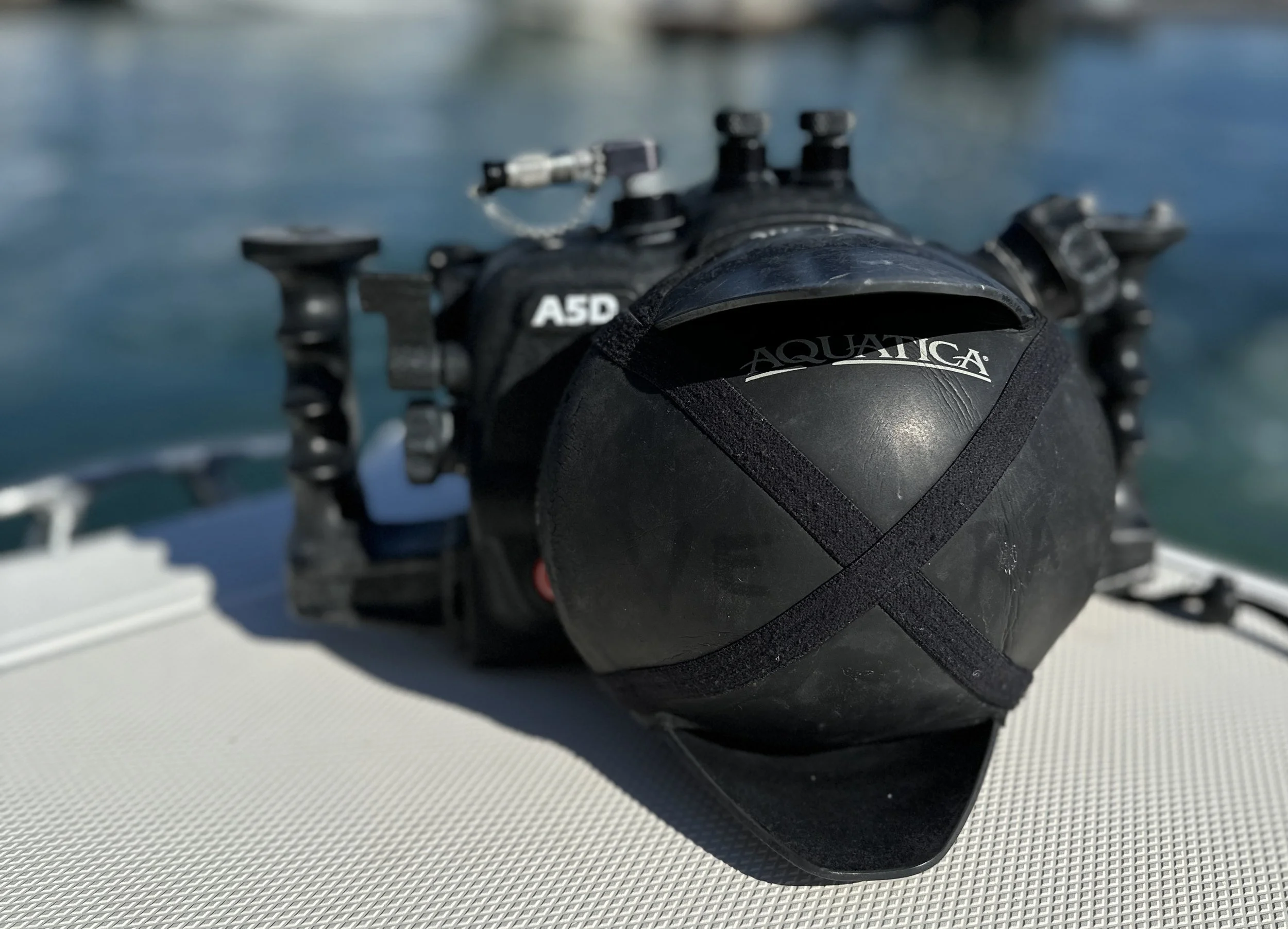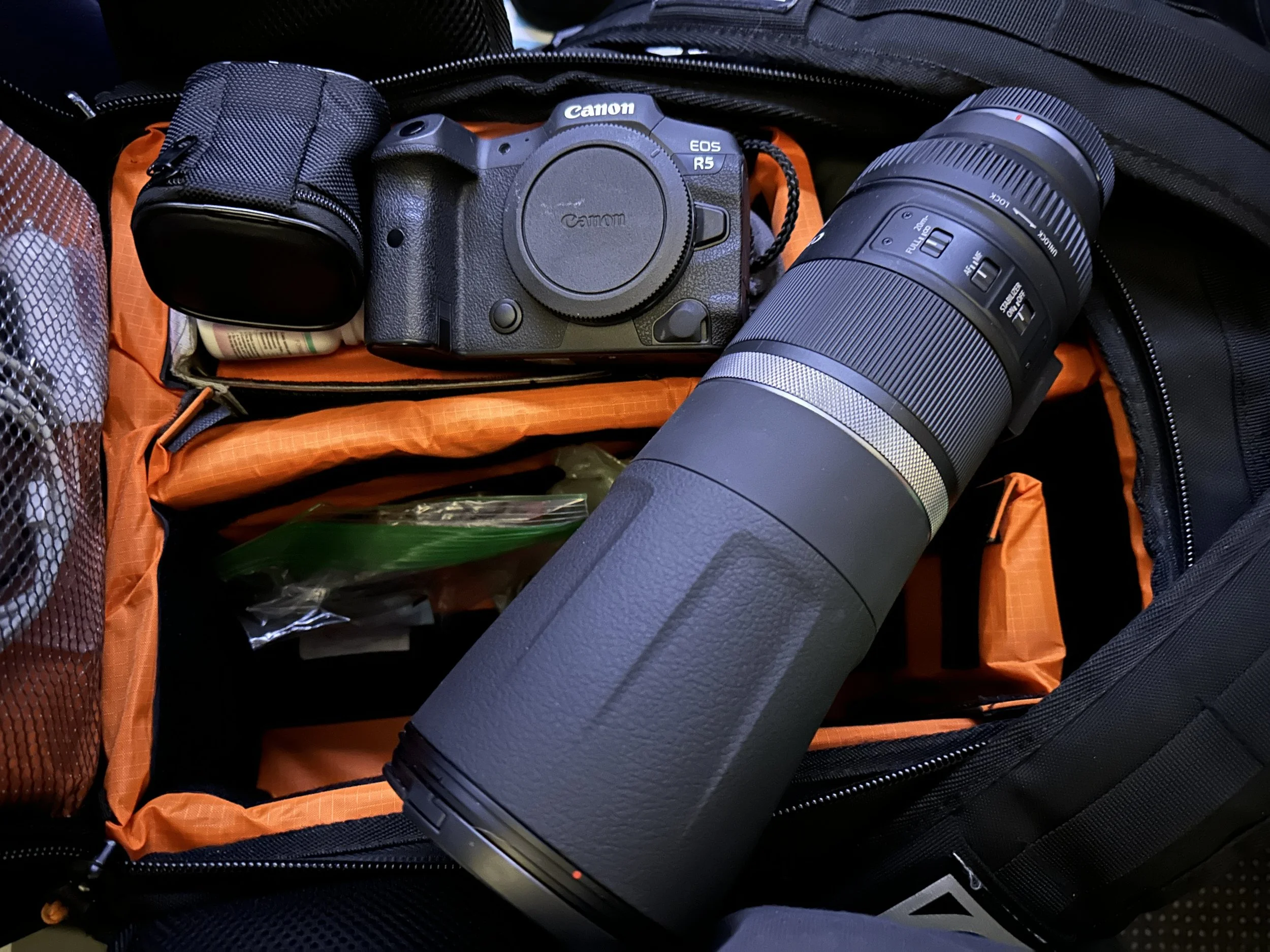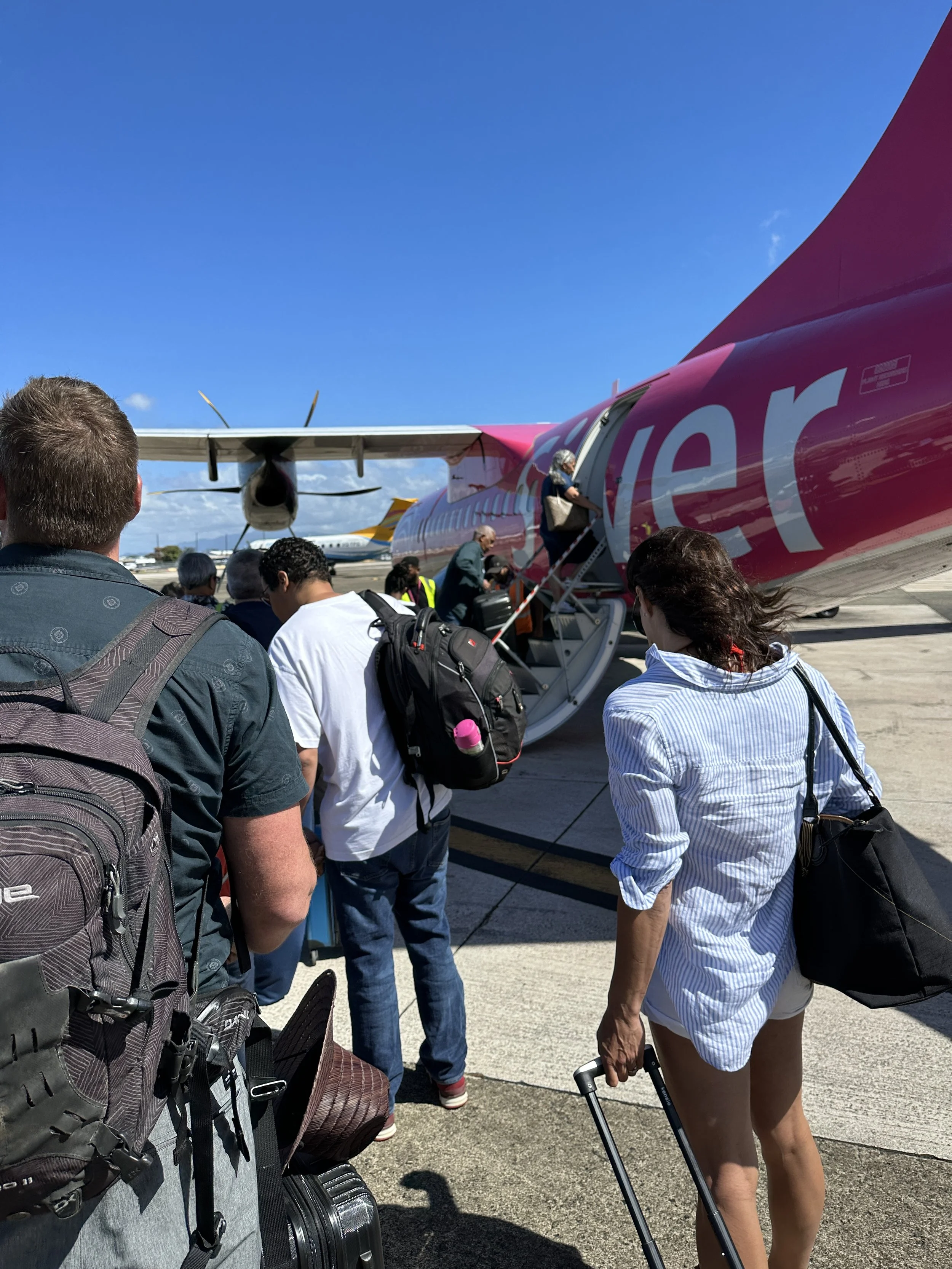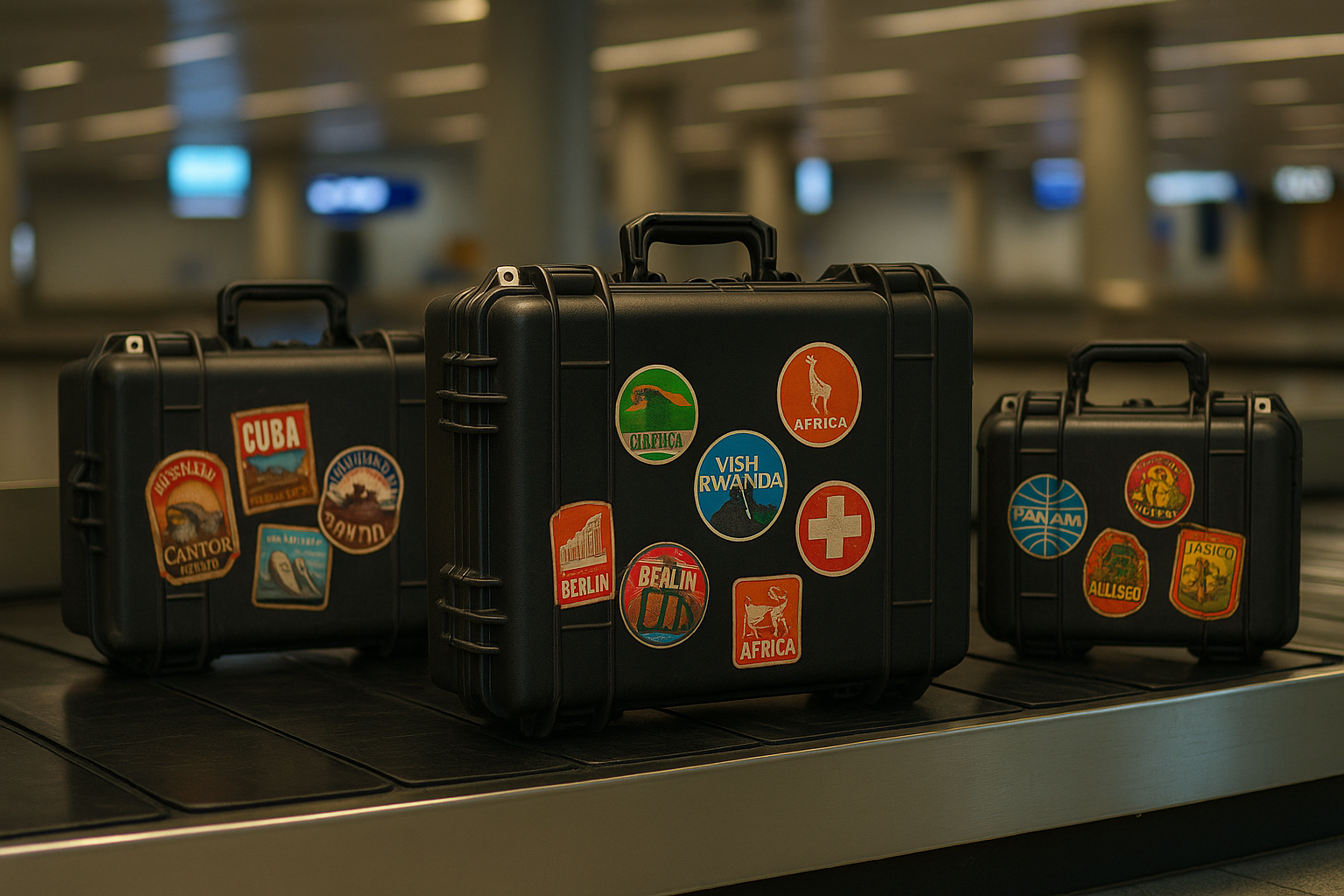Traveling with camera systems used to be a challenge.
Now? It's a strategic battle.
In recent years, airlines have gotten stricter; smaller overhead bins, tighter weight limits, and far less leniency at the gate.
And, If you travel with an underwater housing, dome ports, strobes, or even just a serious DSLR setup, you’ve probably felt the pressure.
For those of us who live and work on the road, who rely on our gear to capture those once-in-a-lifetime wildlife moments, the stress begins before we ever board.
Here’s what many of us are running into:
Carry-on weight limits are being strictly enforced. Especially on international airlines. 7kg (15 lbs) is a common cap, and it’s not enough for most housings, lenses, or strobes.
Bags are being measured and sometimes weighed at the gate. Not just at check-in. If it looks bulky or heavy, expect a pull-aside.
Hard Cases equal instant attention. That small Pelican case might protect your gear, but it screams "open me and charge this person."
Overhead bin space is shrinking. Especially on budget or regional flights. If you're not early to board, you might be out of luck.
Gate staff have less flexibility. Even if you’re polite and early, they often can’t make exceptions anymore.
Underwater rigs add even more complexity.
Domeports, trays, arms, strobes, and batteries aren’t just heavy, they’re delicate and expensive. Most of this gear cannot be checked safely.
Your only option? Carry it. All of it.
And that’s where it gets dicey.
Even destinations that exist because of wildlife photography, like Churchill, Canada, have super strict carry-on rules.
Small regional aircraft mean limited bin space and strict enforcement of size and weight, regardless of how many 500mm lenses are onboard. I’ve seen photographers forced to check fragile gear just for being slightly over sized.
And it’s not just bush planes. Even large international airlines like Fiji Airways, with their massive 10-row wide-body jets, will weigh your carry-on at the gate and flag you if you're over their limit. It makes no sense when the aircraft could carry elephants, but your 18 pound backpack triggers alarm bells.
Here’s how I survive the gauntlet:
1. Weigh everything ahead of time.
Know the weight of each bag, including your personal items.
2. Use your personal item bags wisely.
A backpack or laptop sleeve can carry camera bodies, chargers, batteries, and memory cards.
3. Dress smart, and use hidden storage.
I’ve started wearing a lightweight, foldable photographer’s vest under a jacket. It’s low-profile but packed with utility. When I’m close to a weight limit at check-in, I’ll shift gear, like lenses, hard drives, camera bodies, even a laptop, into the vest. It’s saved me more than once.
4. Never check housings or strobes.
Yes, technically you can check a Pelican case. But the moment it disappears down that belt, there’s always that pit in your stomach, the fear that it might not come back… or that something inside it won’t.
I’ve heard too many stories of gear showing up damaged, missing, or not at all. Apple AirTags offer some peace of mind, they let you track your bag, but it’s not the same as having your gear by your side. When you’re carrying thousands of dollars in fragile tools, peace of mind is everything.
5. Bonus Tip… Know your battery rights.
If a gate agent insists you check your camera bag, calmly explain that it contains lithium-ion batteries, which by international aviation law are not allowed in checked luggage due to fire risk. This isn’t just a tactic, it’s true, and it usually stops them in their tracks.
Airlines are required to comply with IATA regulations, which mandate that all loose lithium batteries and most high-capacity packs must be carried on. I've used this more than once to avoid getting my bag checked.
6. Pay for Priority.
Board the plane early… You want that overhead space.
7. Pack with TSA in mind.
Use padded inserts. Make it easy for them to inspect without tearing everything apart.
It’s not just the airlines.
In places like Baja, Mexico, customs agents may inspect your bags and charge a tax if you appear to be carrying professional camera gear.
The more expensive it looks, the more they want to charge.
I've gone through great effort to look like a non-diver when flying through certain airports.
I avoid hard cases, dress casually, and try not to draw attention.
But Pelican cases are a guaranteed stop-and-search. If you're seen rolling one through customs, you're almost guaranteed to be flagged.
It’s frustrating.
You’re traveling to document and celebrate the beauty of these places, yet you end up feeling like a target for doing your job well.
Flying with gear used to be annoying.
Now, it feels like a gamble.
But for those of us chasing big wildlife stories in wild places, there’s no alternative.
Your camera isn’t just equipment.
It’s your voice, your livelihood, and the tool that lets you share moments no one else gets to see.
Just be ready to fight for your gear at every gate, every airport, and every connection along the way.
It’s stressful… But it’s worth it.
More Camera-Friendly Airport Tips:
1. Know your airline's carry-on and personal item policies. Some airlines don’t list camera gear exceptions online, but if you ask (especially in advance or via their support channels), they’ll sometimes allow one extra personal item for “fragile or valuable equipment.” Screenshot and save any confirmations.
2. Use the term “fragile professional equipment” If staff try to take your gear, calmly state:
“This bag contains fragile, professional camera equipment. It cannot be checked due to risk of damage and is exempt under standard airline policy.”
You don’t have to say “I’m a photographer.” Say it’s tools for work and they’re fragile and expensive. This matters more than job titles.
3. Mention insurance liability. If they still push back, say:
“This gear is insured and must be kept in my possession for liability reasons.”
That simple phrase often changes the tone. No airline wants responsibility for a $10,000 loss.
4. Be ready to show what's inside, briefly and professionally. If challenged at security or the gate, open your bag confidently and quickly. Showing you’re organized, respectful, and know your gear helps reduce suspicion and builds trust.
5. Print the IATA battery policy. Keep a printout or screenshot of the IATA guidelines for lithium batteries: https://www.iata.org/en/programs/cargo/dgr/lithium-batteries/
This is especially useful when flying through countries with inconsistent enforcement (like parts of Latin America or Africa). Show the regulation if they try to check a bag containing batteries.
Thank you for reading our Blog.
*New Blogs posted 3–4 times a week. (sometimes more.)
Follow along for fresh stories, trip updates, and raw moments from the wild.

